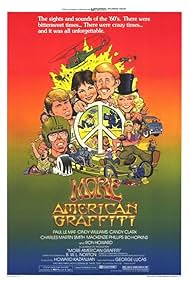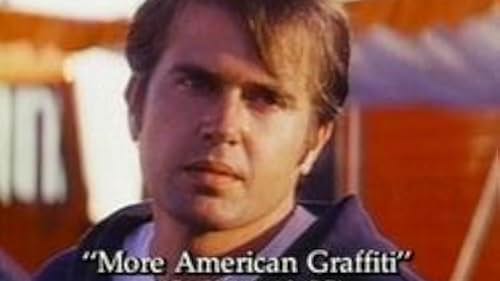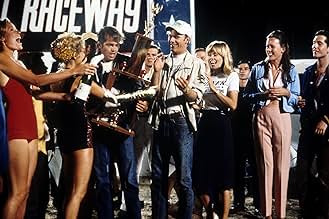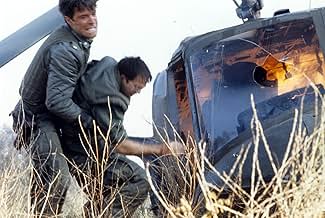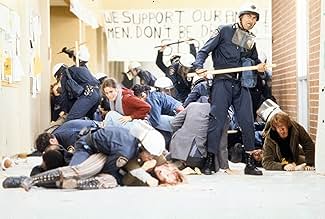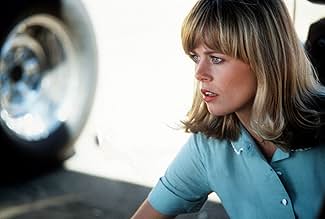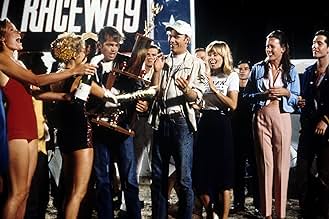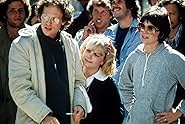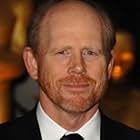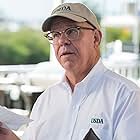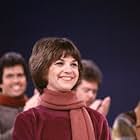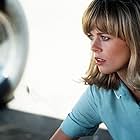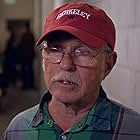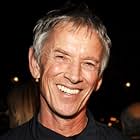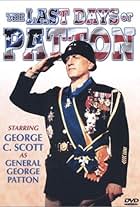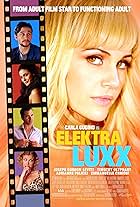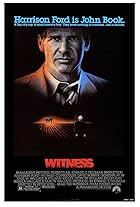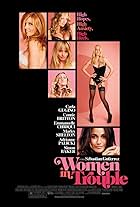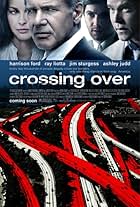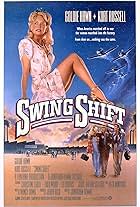IMDb RATING
5.4/10
5.2K
YOUR RATING
Told in four different New Year's Eves in the mid 1960s, John, Terry, Debbie, Steve and Laurie deal with adulthood, the Vietnam war, peace rallies, and relationships.Told in four different New Year's Eves in the mid 1960s, John, Terry, Debbie, Steve and Laurie deal with adulthood, the Vietnam war, peace rallies, and relationships.Told in four different New Year's Eves in the mid 1960s, John, Terry, Debbie, Steve and Laurie deal with adulthood, the Vietnam war, peace rallies, and relationships.
Barry Melton
- Country Joe and the Fish
- (as Barry 'the Fish' Melton)
Storyline
Did you know
- TriviaGeorge Lucas, inspired by Francis Ford Coppola's The Godfather Part II (1974) wanted to make his sequel darker and more complicated. Writer and director Bill Norton thought that cutting between four different time frames would be too jolting for most of the audience and also didn't like the various film formats used for each of the four storylines. Years later, Lucas would admit that Norton was right.
- GoofsToad is portrayed as a helicopter pilot, wearing the appropriate rank of a warrant officer, yet he is treated as a low-ranking enlisted man who takes orders from the First Sergeant and is placed on details for enlisted men. Normally, this would not be the case, as a warrant officer outranks a First Sergeant, and therefore would not carry out such tasks. Additionally, Toad's poor vision would have most-likely precluded him from being a helicopter pilot in the first place.
- Quotes
Terry 'The Toad' Fields: Oh, come on, look at me, I'm a free man! The war is over, and I win!
- Crazy creditsThe current whereabouts of the characters are shown during the movie's final scene.
Featured review
It's tempting to say--as I'm sure several critics did--that "More is Less" when it comes to the "American Graffiti" sequel. Executive producer George Lucas' first failure begins with one early strike: the characters' fates were revealed at the end of the 1973 hit, so we are predisposed to expect a downer. Written and directed by B. W. L. Norton, the film has a novel concept that unfortunately didn't connect with audiences: each character's story takes place on a different New Year's Eve, and then all the episodes are intercut in a timeline. Paul Le Mat is racing cars (and flirting with a pretty Swede); Charles Martin Smith is a soldier in Vietnam plotting his escape; Candy Clark and Mackenzie Phillips have become San Francisco hippies; and Ron Howard and Cindy Williams are battling marrieds with bratty kids (Richard Dreyfuss sat this one out, though Harrison Ford has a sneaky cameo as a cop). Each installment has been filmed in a unique style tailored to the material, with Smith's Vietnam episode the most vividly captured (and the idea of him comically trying to blow off his own arm in order to get back home says more about the war than most antiwar movies do in two hours). The picture's stylistic attributes dazzle for a while before becoming a colorful distraction, with the multi-image cinematography failing to mask the fact that Norton's screenplay is exceptionally thin. He gets some beautiful moments on film, aided by terrific period music on the soundtrack; however, Norton isn't very adept with his actors, most of whom overplay (Howard and Williams are the biggest offenders). There's a hint of melancholy sweetness at the end of Clark's segment (featuring a likably benign Scott Glenn)--also a bit of it in Le Mat's story--but "More" is indeed Less...there's just no way around that. ** from ****
- moonspinner55
- Jul 30, 2001
- Permalink
- How long is More American Graffiti?Powered by Alexa
Details
Box office
- Budget
- $3,000,000 (estimated)
- Gross US & Canada
- $15,014,674
- Gross worldwide
- $15,014,674
- Runtime1 hour 50 minutes
- Color
- Sound mix
- Aspect ratio
- 2.39 : 1
Contribute to this page
Suggest an edit or add missing content

Top Gap
By what name was More American Graffiti (1979) officially released in India in English?
Answer